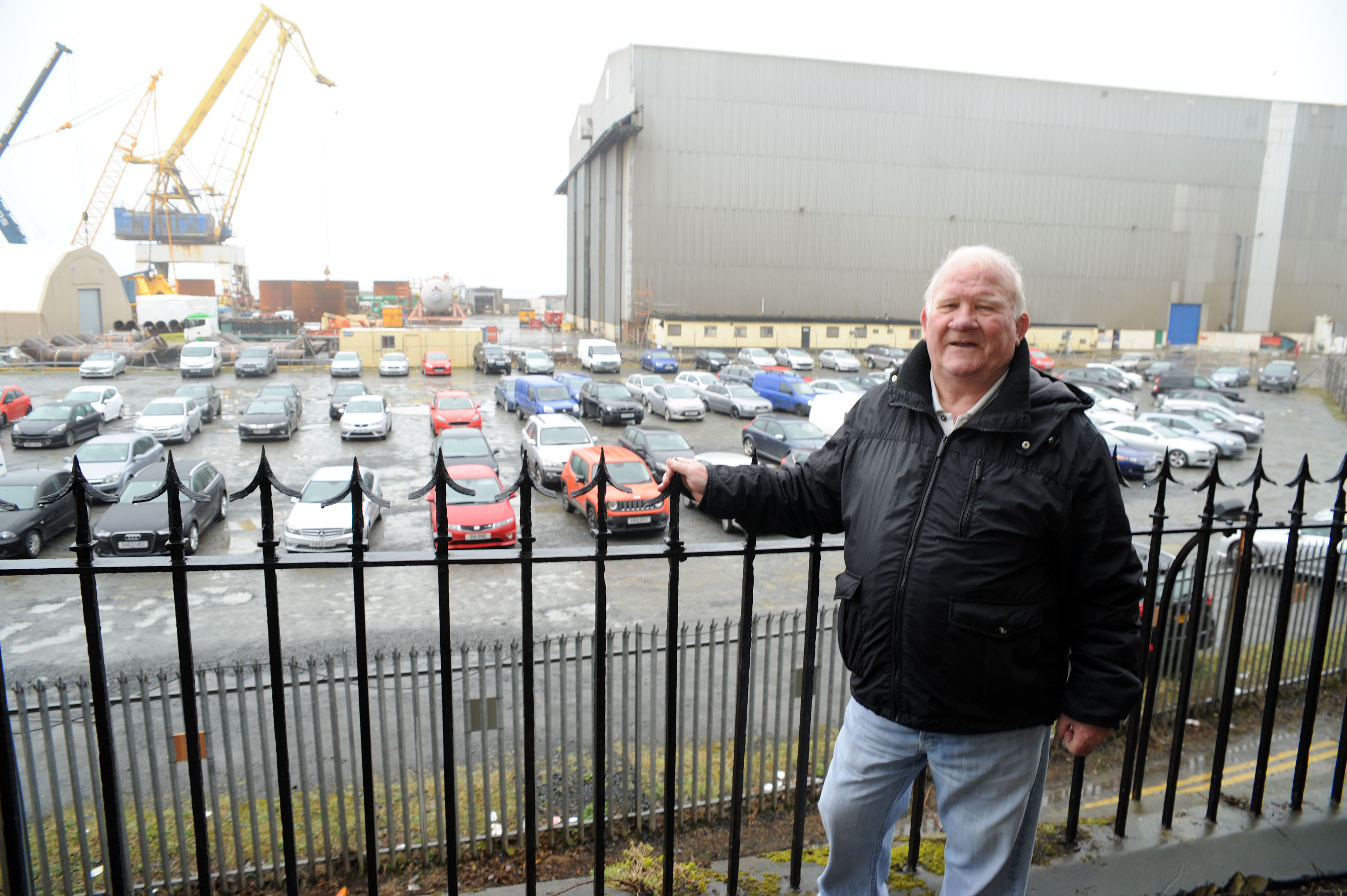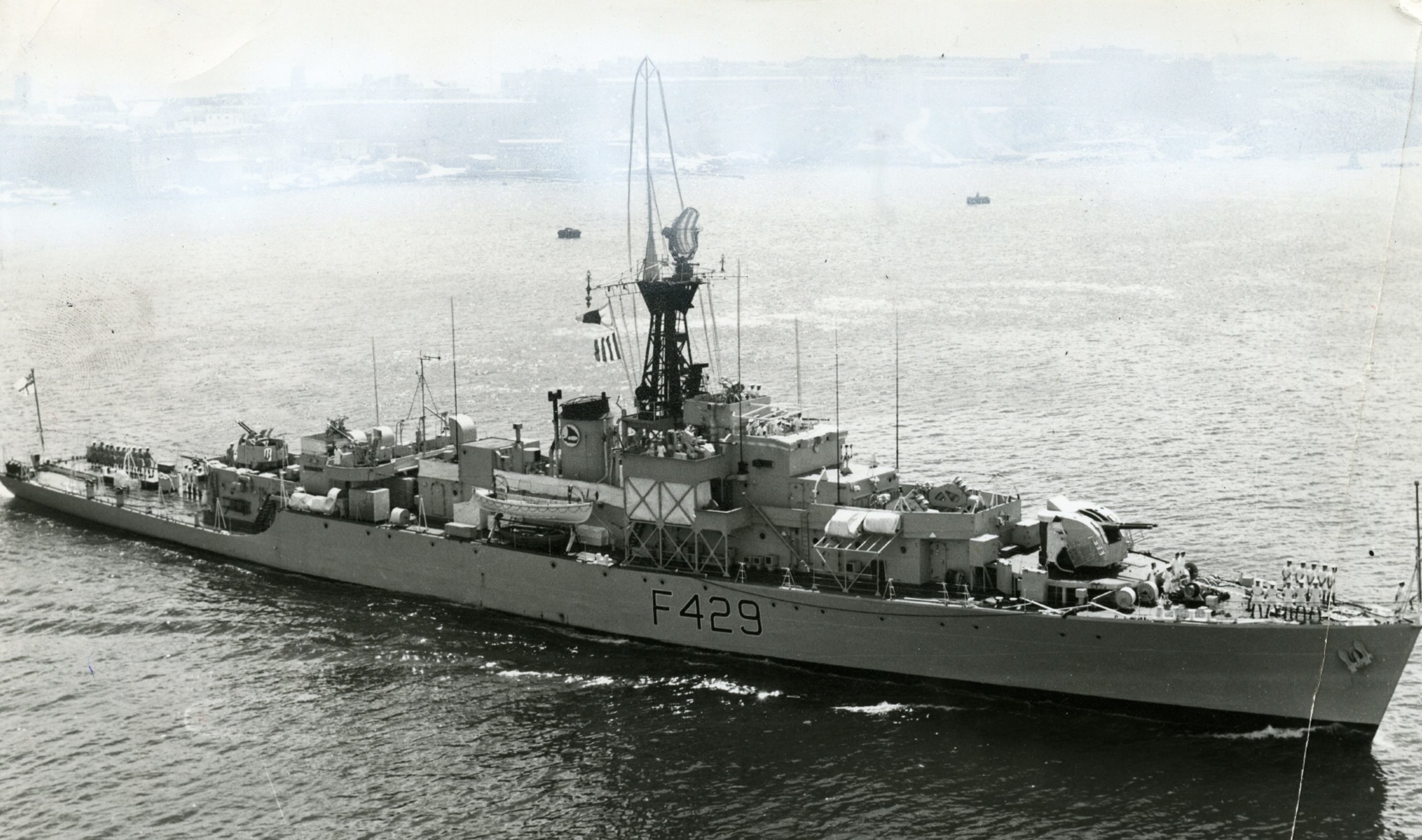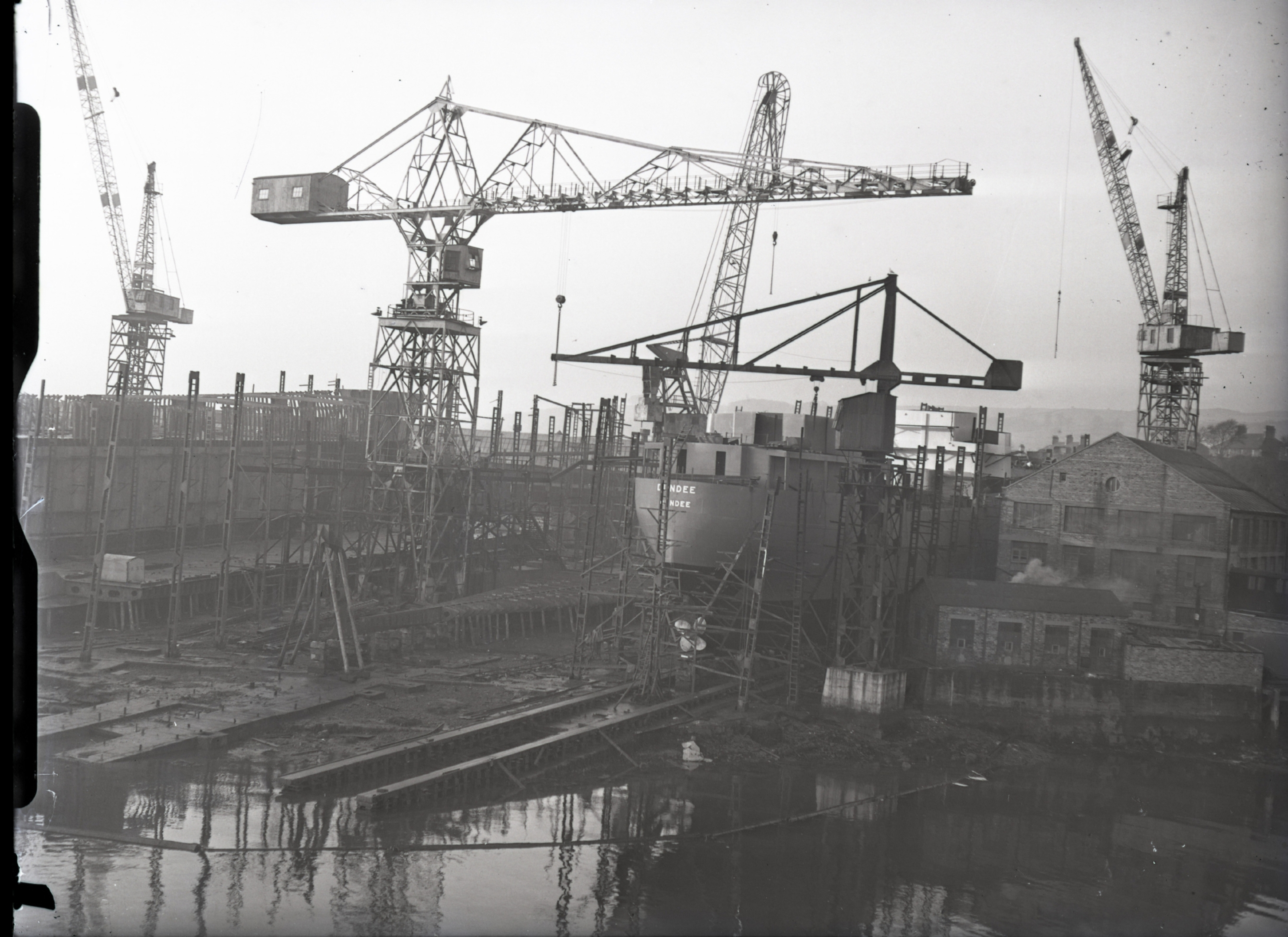They were an integral part of Britain’s security during World War Two, safeguarding crucial supplies of food and ammunition that kept the country’s war effort going.
Now, plans are being developed to install a permanent tribute to the Loch Class frigates that defended these shores near a Fife shipyard where several of the vessels were built.
It coincides with the reopening of the “Half Moon” path, on Burntisland’s Sailor’s Walk, located opposite the former shipyard and where spectators would clamour to watch new vessels clatter down the slipways and into the waters of the Forth.
Having become overgrown in recent years, the walkway was recently reopened to the public, presenting an opportunity to honour the town’s shipbuilding past.
With three of the Loch Class ships having been constructed at Burntisland, councillor Peter George said that the Half Moon would be a fitting place to install a plaque to mark the role of the vessels.
“From here the ships went all over the world,” he said.
“The crowds that would gather here were huge, just to watch the ships go down the slipway.
“Nowadays I doubt that many people would remember the role that Burntisland played during World War Two and that’s why it’s important we do something to remember the ships launched here.”
HMS Loch Killin, HMS Loch Fyne and HMS Loch Glendhu were all constructed at Burntisland shipyard for the Admiralty during World War Two, playing a crucial role in protecting British shipping from German submarines.
It was 1918 when Burntisland Shipbuilding Co Ltd was founded by Wifred and Amos Ayre, providing a vast number of jobs for workers the local area.
Throughout its life, 310 ships were built on the banks of the Forth, with vessels sold to buyers from across the world.
Though still a hub for marine engineering, Burntisland’s shipbuilding days are long gone, with the yard having closed in 1968 as Scotland’s shipyards went into decline.
In that time, the Half Moon, one of the main thoroughfares for workers at the dockyard, became overgrown, until a recent Community Payback project brought the route back into use.
Mr George, who worked in the shipyard in the 1950’s, added: “The Half Moon was brought to my attention by some photos from a worker at BiFab that lives nearby.
“The Half Moon was unrecognisable and I couldn’t pay the Community Payback team that cleared it enough compliments.
“Before you couldn’t have walked through it with a Gurkha knife, but they have done a magnificent job.
“It’s now a lovely walk that can take people onto the coastal path and beyond.”
The ships that Burntisland built:
HMS Loch Killin:
The first of the three Loch Class ships to be delivered by Burntisland Shipyard, HMS Loch Killin was launched in November 1943 and was one of the first Royal Navy vessels to be armed with “Squid” anti-submarine mortars.
Serving in the English Channel, the ship was despatched as a convoy escort, sinking a German U-boat near Land’s End in its role.
Her life span was short however, and she was scrapped in August 1960.
HMS Loch Fyne:
Launched in May 1944, HMS Loch Fyne saw convoy escort work on the treacherous UK to Gibraltar route.
After the German surrender, she was transferred to Scapa Flow and supported the re-occupation of Norway and was eventually transferred to the East Indies Escort Force in the Indian Ocean, repatriating former prisoners of war.
After a period of service in the Persian Gulf in the 1950’s, she was sold for scrap in 1970.
HMS Loch Glendhu:
Launched in October 1944, the highlight of HMS Loch Glendhu’s short service was the capturing of a German U-boat in the Irish Sea in April the following year.
The ship also saw action in the Indian Ocean and Persian Gulf, patrolling the waters off the Seychelles, Bahrain and Singapore.
She was scrapped in November 1957.


